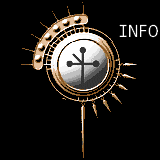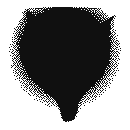Sega Saturn Magazine Interview Compilation
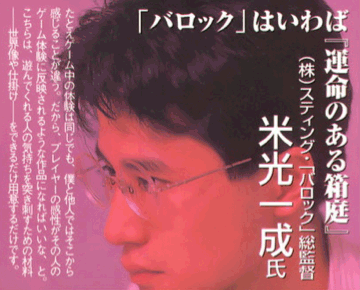
Ordinary games advance their plots the same way movies and novels do. Even if a game features multiple endings, you could still say that the player is moving down a straight path. What I've been thinking about is if there are more ways to tell a story, ways that are unique to video games as a medium. I want to explore this theory this time around.
The plot, to put it simply, is about a man who has feelings of guilt in place of memories. Unbeknownst to him, he must save a world gone mad. That's what the simple version sounds like. He doesn't know what crime he has committed, but he wants some way to eliminate those feelings of guilt. While searching for various clues, you learn that - apparently - by healing this insane world, your sins will be resolved and you can heal yourself. What we are aiming to create are various events scattered over a large amount of time that you can experience if you follow along with the timeline to some extent. Up until now, games have followed the same format as movies and novels. That is, if it ends before you comprehend the foreshadowing or message of the work, you will not be able to understand the plot's mysteries when you walk away. However due to the setting of this game, despite focusing on one protagonist, you will experience the same events many times. Each time, I want the player to make various discoveries.
When it comes to graphics, I would like to achieve a level of beauty that we haven't been able to produce before. Above all, our goal is to make something incredibly unique that's on its own level. Rather than just focus on beautiful graphics and amazing sounds, we are also aiming to make something that is interesting in every way. I'm very enthusiastic to make something new and while we're going back to basics to start working on it, I have a hunch it's going to be something that's never been seen before.
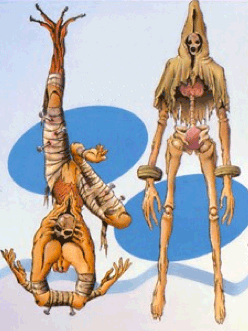
Please tell us about your upcoming 1997 RPG "Baroque". To begin with, what is its current development status?
Yonemitsu: We are currently working on the 3D engine which is the entire foundation for our game, as well as two surface layer elements - the characters and the option screens. After the basic programming of the engine is completed, we will be working on optimization, lighting adjustments, and testing visual elements by displaying characters in the environment. The workload of the designers has substantially increased since we're using 3D map data, and there are doubts about how the room interiors will turn out. I wonder if this will really work on the Saturn (laughs). However, if we can run the rooms at their current quality, I think it will look phenomenal.
What about the gameplay systems?
Yonemitsu: They're completely in 3D. The game more or less takes place inside the "Nerve Tower", but for now we're starting with what's outside of it. Unlike a traditional dungeon, it does not have narrow winding paths - instead it has rooms connected by doors. The protagonist will not appear on screen, and the story will always progress from his perspective. I can't speak more on the subject, because the protagonist has lost his memory. At this point, it is planned that he will not speak a single word until the ending of the game. For example, in Dragon Quest, I think there is the implication that the main character is speaking even though no message is displaying, but Baroque will truly have no voice guiding you through the story. In other words, the protagonist is in a state of almost "zero". Of course, he's lost his memories of the world. Of course, the player also shares this ignorance, so our strategy is to put the protagonist and the player in the same position in order to create an empathy for the main character's situation.
So the story is also unconventional?
Yonemitsu: That's right. The flow of the story is different from that of existing games, so it can be difficult to get through (laughs). Based on the consequences of the actions performed by the protagonist and the state of the world, the actions and feelings of the other characters will change. The story is filled with individual variables like this.
What kinds of things are you putting on the screen?
Yonemitsu: Our emphasis is on making the maps and characters realistic. We're trying to minimize elements that make it feel like a game... like not including unnatural shine produced by items. I want to avoid visual effects that are gaudy or unnatural, so I'm studying how I can achieve this with programming on the Saturn.
Is there anything you're paying special attention to while working on the game?
Yonemitsu: For me personally, it's a very jarring feeling when the player loses the ability to make choices in a game. For example, if there's a button in front of the player, a person prone to stress will feel anxious while people who don't worry about anything will just pass it by. The ability to make those choices for yourself is the direction I'm aiming for. That way it's always interactive and fast-paced. Although I guess that's just because I'm impatient and have a short fuse (laughs).
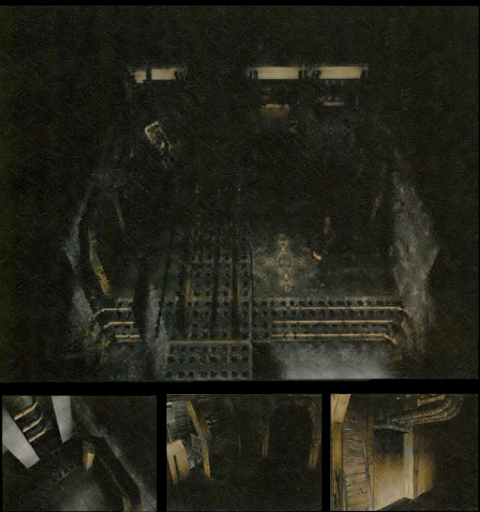
The atmosphere of the whole game is very unique, what's your secret to crafting that?
Yonemitsu: I've been using movies as examples to get the staff all on the same page. The 3 movies I've been showing are "Blade Runner", "Delicatessen", and "Cannon Town" from the omnibus film "MEMORIES". Regarding the color palette, I think games up till now have followed in the footsteps of Hollywood movies - that is to say "bright, bold, and fun". However, Baroque has a dull look, like an Eastern European or Danish film. Going further with the movie comparisons, it has a "film noir" atmosphere. Rainy nights in a rotten city. Lights shining in darkness... You could say it has the atmosphere of the near future I suppose? It's a vision of the future, streets of decomposing structures in a distorted world. That's the kind of image the world of "Baroque" has.
It's a fascinating world view. I've heard you've even had models made for elements like the "Nerve Tower", etc?
Yonemitsu: CG Designers are currently creating models based on those sculptures. We use them to better understand how light would fall on three dimensional objects within a space. The modeler of that piece was Mr. Kito (Modeler Eisaku Kito, in charge of design and model production for Baroque). Right now we have a lot of designers involved, including Mr. Kito, as well as people overseas. At its core, it is a baroque game, so I think it would be nice if it could expand in various directions. For example, through Mr. Kito's fascinating models.
What about the theme of the game?
Yonemitsu: During my career, I always start out aiming to make serious content but it always becomes comical by the end for some reason (laughs). This time, however, there is no such desire. This game is not a straightforward adventure about "love and courage" like the average RPG, it is a work for people who want to be moved. To survive, humans typically use electricity and eat by killing animals. In that way, we carry on with only a vague awareness of our sins. I think that was the origin for the concept of this game. So, how do we free ourselves of that? I want to evoke people's empathy as they decide which path they should walk.
Lastly, what are your plans for the future?
Yonemitsu: I think they're too ambiguous to summarize in a paragraph, but I hope I'll be able to share my future plans in some form eventually.
What is the Great Heat Wave? Is it a nuclear explosion?
It's not a nuclear explosion. Called "Nirvana Death" by some, it is a phenomenon that has distorted part of the world.
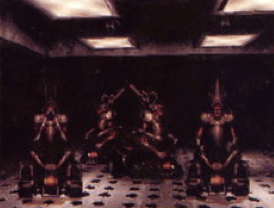
What are Grotesques? How many of them are there?
They are grotesquely shaped people. Therefore, why not call them Grotesques? That's what we thought during development. There are more or less 22 of them, and they appear as enemies in the game.
What's the Nerve Tower? What kind of floor plan does it have?
What's the Nerve Tower? Sorry, that is one of the key points of the game's plot and I can't spoil it here. The floorplan is ever-changing.
Who is the protagonist? Can the player name him?
It's a man who has only guilt in place of memories. The player decides his name. However, it's hard to refer to him without a name, so for the time being we've just been referring to him as "Takeshi-kun".
Who are the angels? What is their objective?
The people who wear wings only call themselves that. The question "What are the angels?" is a key component of the story.
How's your work environment?
It's nice.
How large is the development staff in total?
There's a lot. I can't count them all since we have a lot of people cooperating with us. The main development unit is about 13 people currently.
Where are you developing it?
Tokyo and Hiroshima.
What kind of company is "Sting"?
A company that "stimulates excitement!" Come one and all! Those with ambition and skill!
How's development going?
Wahahahahahahahahahahahahahaha.
[Despite Mr. Yonemitsu's misleading laughter, development is actually continuing day and night]
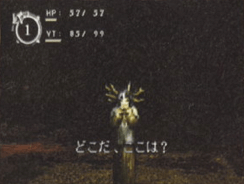
It's difficult to think that "I'm going to get through this whole thing!" right now. It feels like I'm trapped in the middle of a whirlpool. It's hard to express it in words, but it is a thrilling production to be a part of, it feels like I'm rearing mutants. The principles that were laid down from the start, such as "multi-layered development", "shifting structure", "freedom", "space", and "strategy" have not changed, however everything else except my persistent headache has.
You could call it "a Zen Garden of my Life". Even though we're playing the same game, it seems like what I feel is different from what others are feeling. So I hope that each player's sense of self will be reflected through experiencing the game. In the more extreme cases, some people are laughing while they play, while others are terrified; the game evokes a lot of different emotions. For users to read into and take something away from "Baroque", I first have to properly prepare the material for that purpose. I can't just have countless gimmicks and world depth, it has to be possible to tie everything back together. How many elements can we create that will truly affect the players' feelings? That's where I'm at right now.
All you can see on the grounds of Nazca are rows of stone, but when you abandon that physical perspective and examine things from a more mental perspective, you rise into the sky and can see things in a totally new light. By repeating things over and over, the story will change based on the player's responses and feelings - I think this is something that's difficult to achieve outside of a game. I'm hoping it will be a new way of telling stories in games.
I've always been interested in telling bold and straightforward stories like "Treasure Hunter G", but this time I will be trying a different methodology. At the time of "Treasure Hunter G", the industry standard was "Final Fantasy", where the anxiety was more about "I have 60 points right now" and "What level should I be?"
However, even if there were no story, we are trying to make it stand on its own with just the game mechanics to the point where we could just remove the whole story. All of the staff are going forward with that kind of dedication.
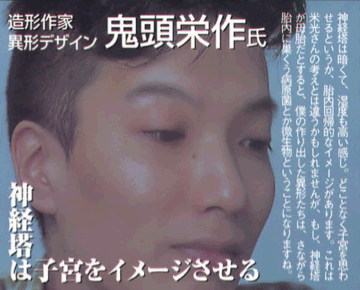
When did the discussion about "Grotesques" first begin?
Kito: It was around May of last year.
So from an early stage?
Kito: Yes. I was participating in the project back then, so the tone of the game and the tone of my work have influenced each other.
How do you communicate with Sting, exactly?
Kito: I typically model based on request forms I receive from them, which contain specifications for each Grotesque.
Does the image conveyed by their words gradually take form in your mind, or is it something you can come up with on the spot?
Kito: There are various ways in which the shape can conceptualize.

But you're making progress on the 8 requested designs, right?
Kito: Of course there are always "Let's do this later" moments. There are all sorts of times when ideas can suddenly come together. It can happen abruptly while you're on the train, or thinking about whatever while having a drink. It's difficult to put into words because it's such a jumble of thoughts... In the case of "Soconpo" for instance, the request form simply said "frog, four hands..." My general method is to expand on the requested terms until I can find the most appealing aspect to focus on. To be specific, it could be something like absurdly large hands, like with this troublemaker (laughs) - just anything that adds definition to the design. Take everything to the extreme and don't stop making rough sketches. Otherwise you could always go in the opposite direction and work on subtlety.
After you've settled on an idea and move to the production stage, what is your modeling procedure like?
Kito: For me personally, there are times when I don't decide on an idea before I begin and don't really find my rhythm until partway through. Sometimes I'm so motivated to work I just dive right in, but that's only one of two methods - the other is relying on a solid design picture. Both of these approaches can produce interesting results. Whether or not you ad-lib a piece, I think it'll be fine as long as you keep the basics in mind and stay focused on the character's key features.
I find it very interesting that you can use such a method for modeling.
Kito: It's best to first draw a sketch by imagining it as a solid figure in your head and trying to envision it from multiple angles. It would be nice if it were possible to do this quickly, like it is when working with CG models, but because we have living human brains, it can take a lot of time to understand what something might look like from behind (laughs). For models that are created from design sketches, not ad-libbed, how well you visualize the object will determine how smoothly the subsequent work will go. Whether or not you can turn an object from your imagination into a 3D model depends on your ability to sketch based on mental rendering.
Is it possible to make models entirely on your own?
Kito: I usually model alone. Occasionally I'll get assistance from vocational students studying design and modeling... I think a great thing about modeling is that you have total, individual control over your models, from sculpting the surfaces to the colors you use when painting.
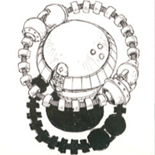
Assuming that a character is animated within a game, does that then mean there will be differences between the model in the game and the model you designed?
Kito: Yes, it does happen... "Animation" means that your model can become a "keyframe" when expanding on how the parts of the body move. It can go even further, because if a part of the body becomes a joint, then something like a bone would also have to exist there. From the other perspective, if I place a feature somewhere, I wonder if it will become an obstacle for movement. It's fun to think about how the character might move while modeling it. However, since it's a video game, it will be somebody else making those decisions, but it's always a nice surprise to see how your characters end up moving in the game. I'll be happy if they get some imaginative animations in this game.
What is your own personal take on the aesthetic of "Baroque", Mr. Kito?
Kito: The game's creatures are restricted to the inside of the Nerve Tower, aren't they? If so, I feel like it must be dark and humid. For some reason, the Nerve Tower reminds me of a uterus, so there is a recurring in utero motif. I think my interpretation is probably different from Mr. Yonemitsu who is leading the project. But if the Nerve Tower is like a mother's womb, I wonder if that makes the Grotesques I created pathogenic bacteria or microorganisms that nest in the womb (laughs).
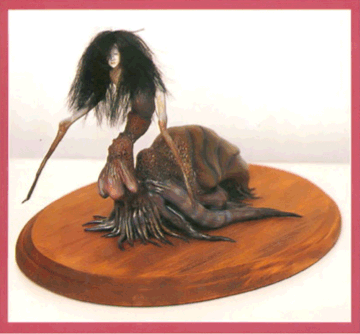
Kito: The description I was given was 'a root-like woman with whips for hands.' When you pull out a root, you can see even finer roots extending from it, right? So I gave her messy hair that resembles these finer roots. She feels like a yokai or a kuchisake-onna.
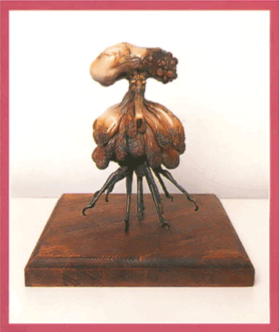
Kito: If you poke it, it spurts some weird sap and looks like it would try to give you a gross kiss (laughs). It looks weak, so it would be overjoyed to win in a fight. Its attack method is to expand its mouth and either suck out your spirit or blow fire. It's also has delicate legs like a mosquito.
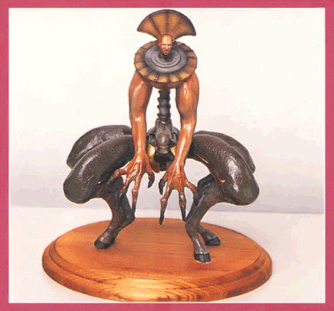
Kito: I started from the concept of "Emperor." The order called for headgear, large hands and ears, and multiple legs. When you call him an Emperor, you get the impression that he's a tyrant riding a horse.
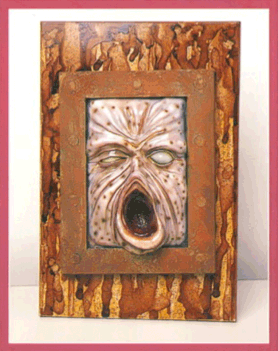
Kito: This one was supposed to resemble a wall, so that's just what I made. It's like a wall-mounted trap and looks like it should have something slimy coming out of its mouth.
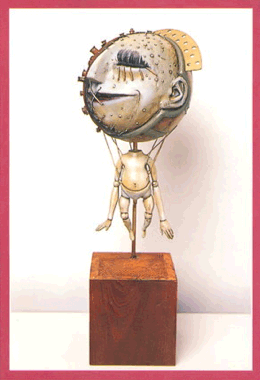
Kito: Suggestive of a balloon. "Today will be the best!", that's the kind of cheerful character it is. However, its head sometimes explodes like a bomb. It resembles a child, but that also means it can be cruel.
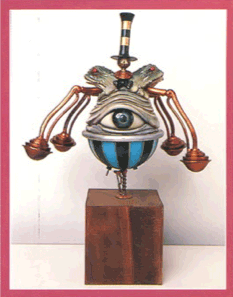
Kito: The request stated it should have frogs on both shoulders, have one leg, weights for hands and four hands... After a lot of trouble, I ended up with something fun that resembles a one-eyed balancing toy which hops around on one leg.
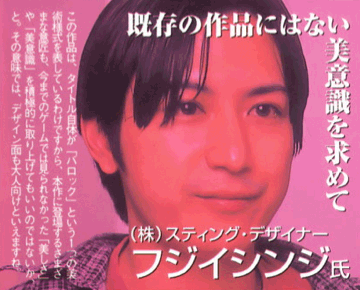
Mr. Fuji Shinji - Formatting designer. In charge of all items that appear in "Baroque". One of the first to be involved with development for "Baroque". Utilizing his expertise in digital mediums, he is also involved with movie editing and design for Sting's homepage. His favorite movie is "The World According to Garp".
Seeking an aesthetic that existing works don't have, the item designer talks about the charm of gadgets.
So you designed the items, Mr. Fuji?
Fuji: Yeah. The existence of things called Purification Tools was originally decided upon in the initial planning stages. Other than that, I would get advice from Mr. Yonemitsu (the project leader), such as "It looks like this... like a box, with a handle".
What kind of concepts are you told to incorporate into your work?
Fuji: Mr. Yonemitsu doesn't say things like "Do this, do that". Aside from the advice he gives, I'm free to do what I want. Whether they're beautiful or weird, I think the items always look cool because he allows them to reflect the designer's intentions.
From sketching to creating the CG models, are you working all by yourself?
Fuji: That's right. Originally I was intending to just draw small sprites but they weren't matching up with the drawings I did... In the end, I ended up converting them to 3D and while I was reducing the color palette, I was trying to figure out how to finish them. That's the process I'm trying to figure out right now. Basically, the items will be on the ground, so I can't render the final design of the item until the height of the player's viewpoint is decided. For gameplay, it will be necessary to adjust the angle of the item and the light source in order to make them easier to find.
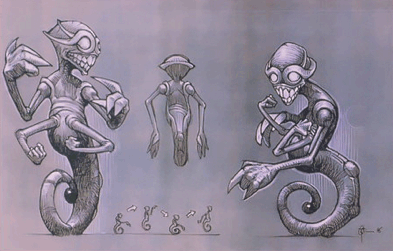
Is there anything you've paid particular attention to?
Fuji: Compared to the gadgets (props) of other games, I think the three-dimensionality of ours really sets them apart. However, assuming the image is being displayed on a home TV screen, the player might not be able to recognize what they are if I go too overboard on the details. Of course, if it's too simplistic then it's boring, so you have to find a balance, right? Mr. Yonemitsu only gives me abstract feedback like "More floppy" (laughs), so being able to freely use trial and error has been fun.
Are you satisfied with what you're working on?
Fuji: I'm confident that I am familiar with the atmosphere of the dungeon and know what will appeal to the player. All of it has to be unique.
What is the atmosphere of "Baroque" to you?
Fuji: Hmm... Yes well, to be honest, I think there are aspects of it I can't quite grasp myself...
Readers have also said that they "don't know what kind of game it is" (laughs). Our writers and editors don't either...
Fuji: As various decisions are made and the design progresses, the parts I don't understand continue to grow. Another thing I don't understand is the appeal of "Baroque" - is it an "escape"? (laughs) Mr. Yonemitsu, why can't you tell meee?
Tell us about some of the hardships you've experienced in the design process.
Fuji: I think it was the "Heart" that took the most time? I couldn't quite manage to draw a heart. I redrew it countless times. People kept saying "This looks like a chicken nugget".
Is that an item?
Fuji: Yeah. You could say... I put my heart into it (laughs). I only just finished it. Mr. Yonemitsu's memo only said "It's a heart." So when I asked if I should put it in a container or something, he said "No, just leave it raw."
Could you say your work has been to your heart's content?
Fuji: Are you... a "torturer"?

What are "Torturers"? ...a weapon or an item?
Fuji: They're "tools of torture", the "torture" means a type of punishment, and the "tool" is like an "instrument". I can't speak about them in detail, but they're weapons that "attack all the enemies in a room", however from the looks of them, I can't easily imagine how they accomplish that.
Doesn't it look aggressive?
Fuji: Yeah. The design does have a dangerous feel. It has spikes coming out of it... It kind of resembles a torture device like a rack, doesn't it?
It's not just the items, but the entirety of "Baroque" that evokes a kind of S&M aesthetic, doesn't it? To try and get a frame of reference for the designs, we've been studying and reading up on the subject (laughs).
Fuji: Noo (laughs). I haven't read any such books, but now I'm starting to feel like I should have (laughs). I didn't have S&M gear in mind when I was designing. The title "Baroque" is originally a style of art, so the various designers proactively try to create a "beauty" and "aesthetic awareness" that hasn't been seen in games before. In that sense, you could say that "Baroque" is intended for adults.
Remote Avant-Garde Art House "De Gado Renerou" Museum Exhibit
The element of "items" is deeply ingrained into the game systems of "Baroque". Mr. De Gado Renerou, a master of contemporary Italian art, is working closely with Mr. Fuji on the designs. Here we will specially disclose unpublished items - produced but never seen by a third party due to Renerou's perfectionism - with commentary provided by Sting's Development Office.
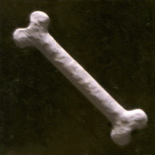
Without understanding the atmosphere of "Baroque", I created a bone that the staff joked looked like it belonged to "a caveman in a gag manga".
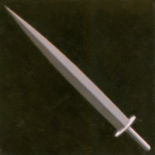
A sword... There is no game these days that would use such a cliche sword. Maybe I don't understand the world of "Baroque"? I'm a little worried.
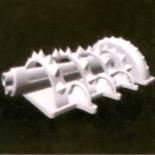
After repeated requests, I seem to have started to take things seriously. I don't know what it is, but at least it's not cliche anymore. It was hard work, but it's just not very cool.
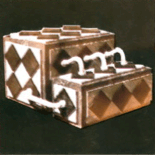
I wonder what this is. A tool used for a magic trick? I don't know. Perhaps it's a storage case? Because of the protruding cords, you can at least eliminate the possibility that it is "a stepping stool".

As you can see, this is a "Japanese muffin". However, I praised myself for making "such a cool looking weapon". For some reason, my enthusiasm for the project began to turn into resentment around this time. "What did I do wrong!?"
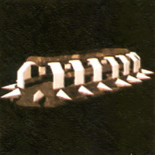
It has spikes... Is it a coffin? Am I even qualified to be considered an artist these days? Rumor has it that I'll have to start scavenging for food soon...
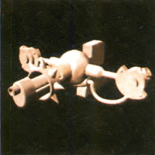
It was very half-assed. Not very good. There is no word from the development team anymore, their total silence wounds me. All I can hear is the sound of blowing wind...

I wonder what this is. A weapon? I'm not sure what to make of it. It's a little cool, but I don't know why. I certainly hope it doesn't turn out to be a musical instrument...
Effects and Usage of Each Item
The three items that have been revealed so far are the "Purification Tool", "Box", and "Brand". We asked Mr. Fuji himself about the effects these items have in game, how to use them, and about any stories from the design phase. You can sense the atmosphere of the world of "Baroque" just by looking at them.
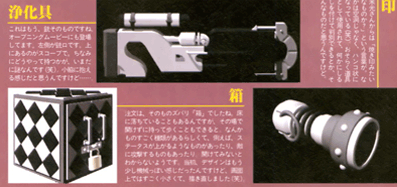
Purification Tool
This one's a gun, isn't it? It also appears in the opening movie. The left side is the muzzle. On top is a scope. How you're supposed to hold it is still a mystery (laughs). It feels like maybe you hold it in your armpit...
Box
The order really did just specify "a box." They sometimes appear on the floor and you can carry one without opening it on the spot. There appear to be a great variety of these things, for example, there are boxes with status effects and ones that attack the enemy. I guess you won't know until you open it. The design looked a bit more mechanical initially, but it showed up too small on the screen and I had to redraw it (laughs).
Brand
Mr. Yonemitsu asked me "That doesn't really look like a branding iron though?" The inside is not empty, it has a family stamp inside (laughs). It's probably used as a tool, so that you can distinguish between items by marking them.
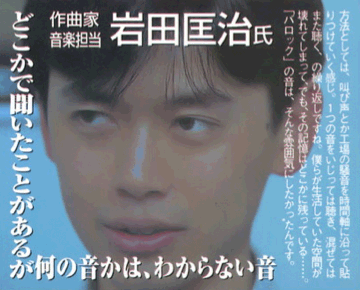
The Sounds of "Baroque"
"Baroque" has a "unique" aura you can feel just by looking at screen shots, so of course, the BGM will be a major factor. Perhaps if we listen to Mr. Yonemitsu, project director, and Mr. Iwata, who is in charge of music, we'll be able to hear that "distorted tone"?
How are you making sounds that have a "Baroque" feel?
Iwata: You first showed me a video, right? It was of fashion designers making clothes.
Yonemitsu: (imitates the sound of a sewing machine) The cutting of scissors, the seabirds, the piano music, and sewing machines were all overlapping. I thought the way they mixed together was cool.
Iwata: You kept showing me various things, but I could never understand why (laughs). Even just reading the proposals, there were a lot of words I didn't understand like "Grotesque"... I was always asking "Mr. Yonemitsu, please explain it a little more."
Yonemitsu: So I sent you poetry I wrote.
Iwata: What you sent me was always like "The twisting sunset that shines through the skylight dyes the tears running from the eyes of the crucifixion statue the color of blood." They were always the kind of thing someone would write the morning after having a nightmare (laughs). "The ghost cars all slammed on their brakes but they ran it over anyway", wasn't it something like that? Then Mr. Yonemitsu would say "Because they're suddenly braking, you should make a sound like squealing brakes here" (laughs).
Yonemitsu: It wouldn't work out if you could make a song exactly like those poems... they're just examples. Just the atmosphere. Basically, I had the idea of "making songs that don't sound like songs." I wanted it to have a shocking sound, not necessarily a melody that you could hum, I just want people to feel as if they were there.
Iwata: Thanks to those poems, from the end of last year to the start of this one, I've been feeling pretty unhinged. When I'm making songs, those poems always pop into my head (laughs).
They certainly are songs that evoke bizarre feelings.
Iwata: The one nicknamed "Namu Ami" is pretty scary, isn't it?
Yonemitsu: It's pretty scary to listen to when you're playing the game. I was a little disturbed by it even though it's a game I made myself (laughs). But to me, that means I've succeeded.
Iwata: It's pretty much the exact opposite of the game "Treasure Hunter G" that we worked on together. That one had the same tone of "Tactics Ogre", and there were a lot of moments that directly expressed "what the player should be feeling" while watching the scenes, such as "Cry!" or "Worry!" ...They were all songs that explained what was going on.
Yonemitsu: But even with "Treasure Hunter G", I feel the sounds Mr. Iwata was making sounded fresh. Making sounds like that isn't easy. They can't just feel good, they also have to be interesting to listen to. That's why I asked him to come work on "Baroque" as well.
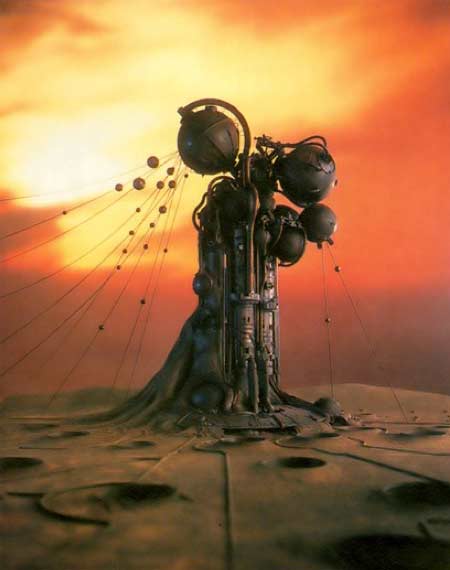
Is this not music that can be written in 5-line notation?
Iwata: That's right. They're made up of stuff like screams, factory noises, things like that, all pasted into a timeline. You have to play with one sound at a time and listen to the whole thing over again. When reporting to Mr. Yonemitsu, I likened it to "kneading clay" (laughs).
Yonemitsu: When I called to check on how things were going, you said "I've been recording the sound of water all day".
Iwata: Of course, all the sound I sample in this way will be heavily processed, so even if you're listening closely to the songs, you won't be able to distinguish them easily. For the music in "Baroque", I wanted to create the kind of atmosphere of visiting somewhere I once lived, only to find it demolished. Even though it's destroyed, those memories remain somewhere... It's that kind of atmosphere. Like a sound you've heard somewhere but can't exactly remember what it sounds like. That's the kind of sound I was aiming for.
